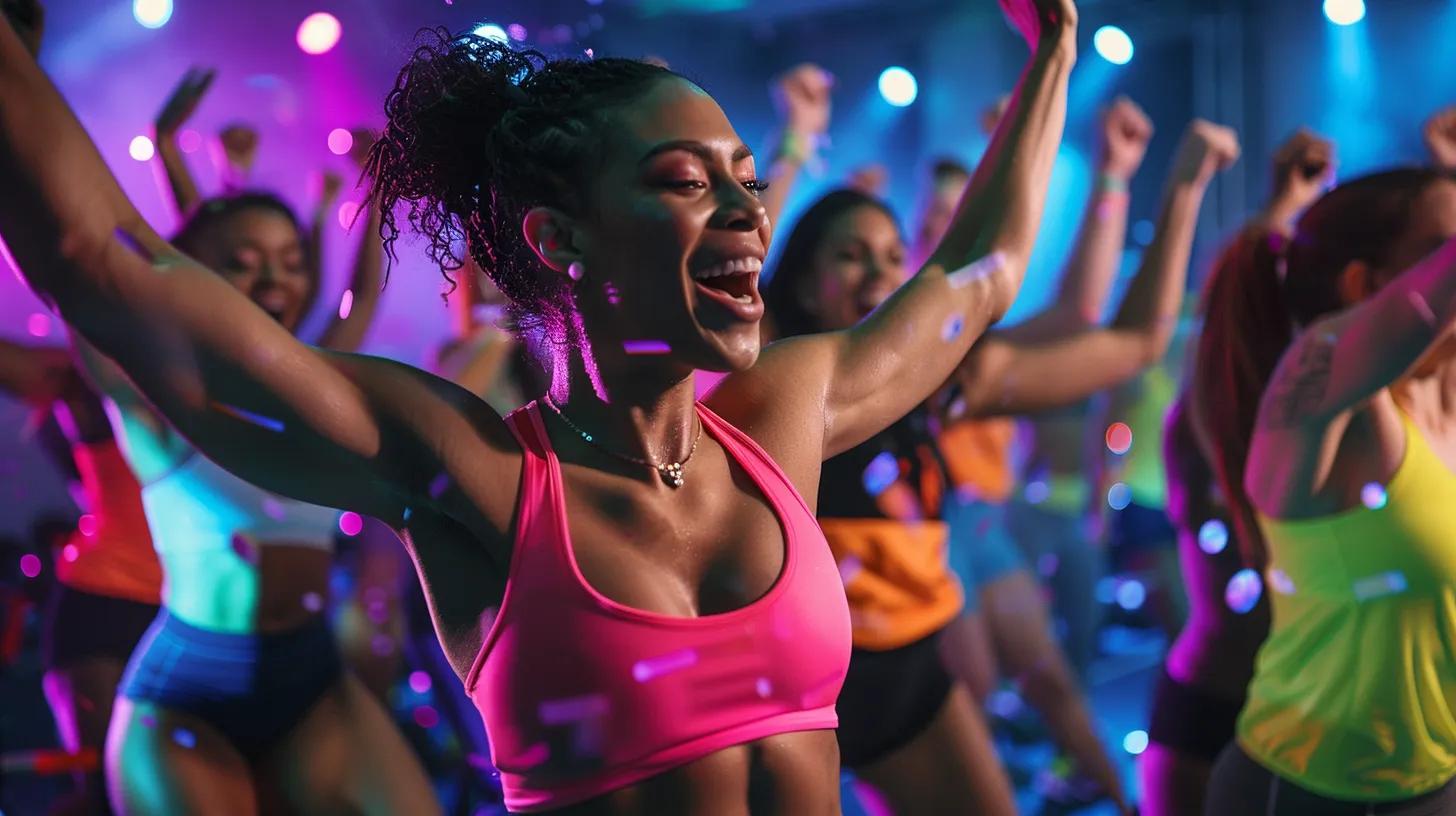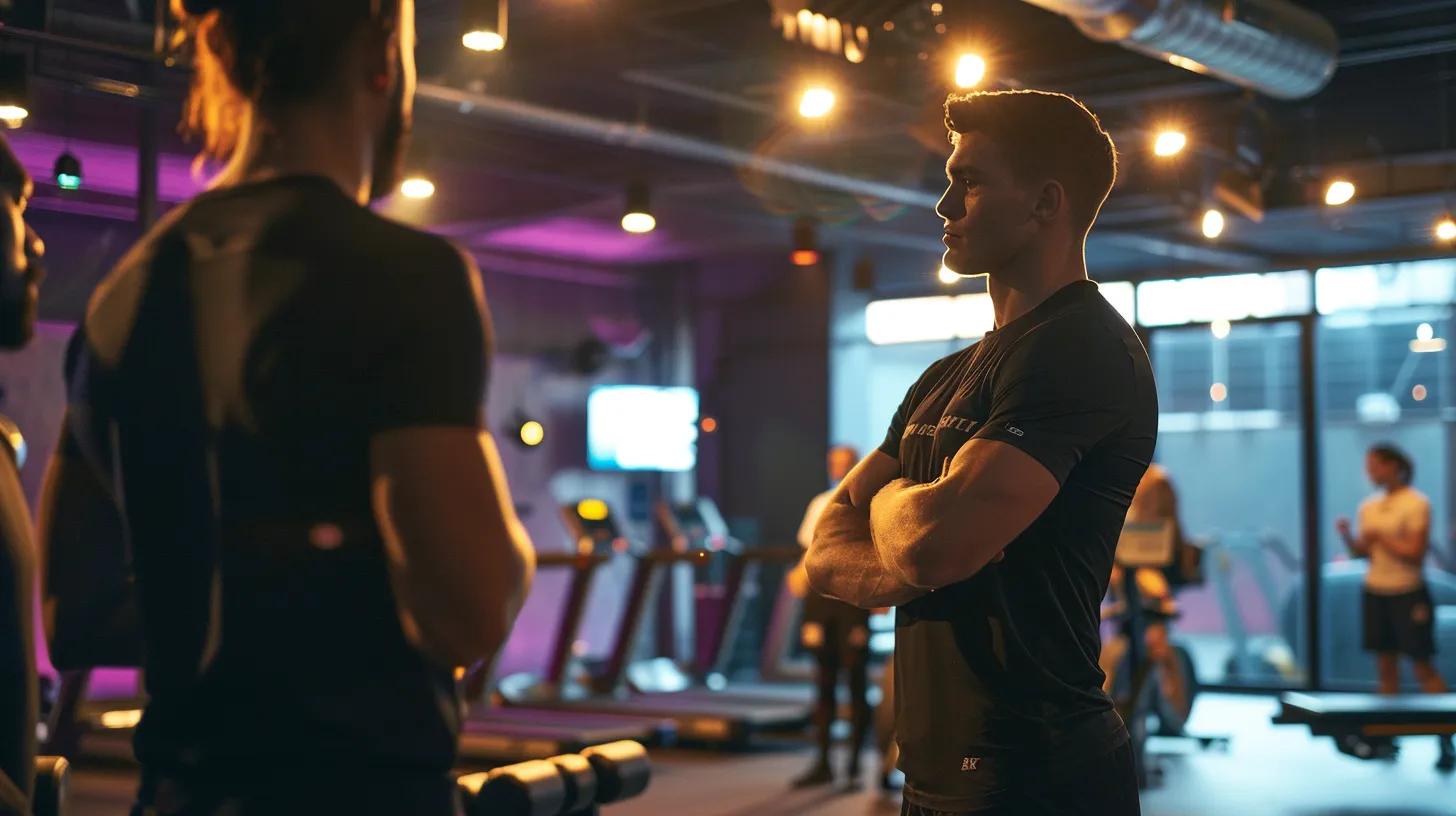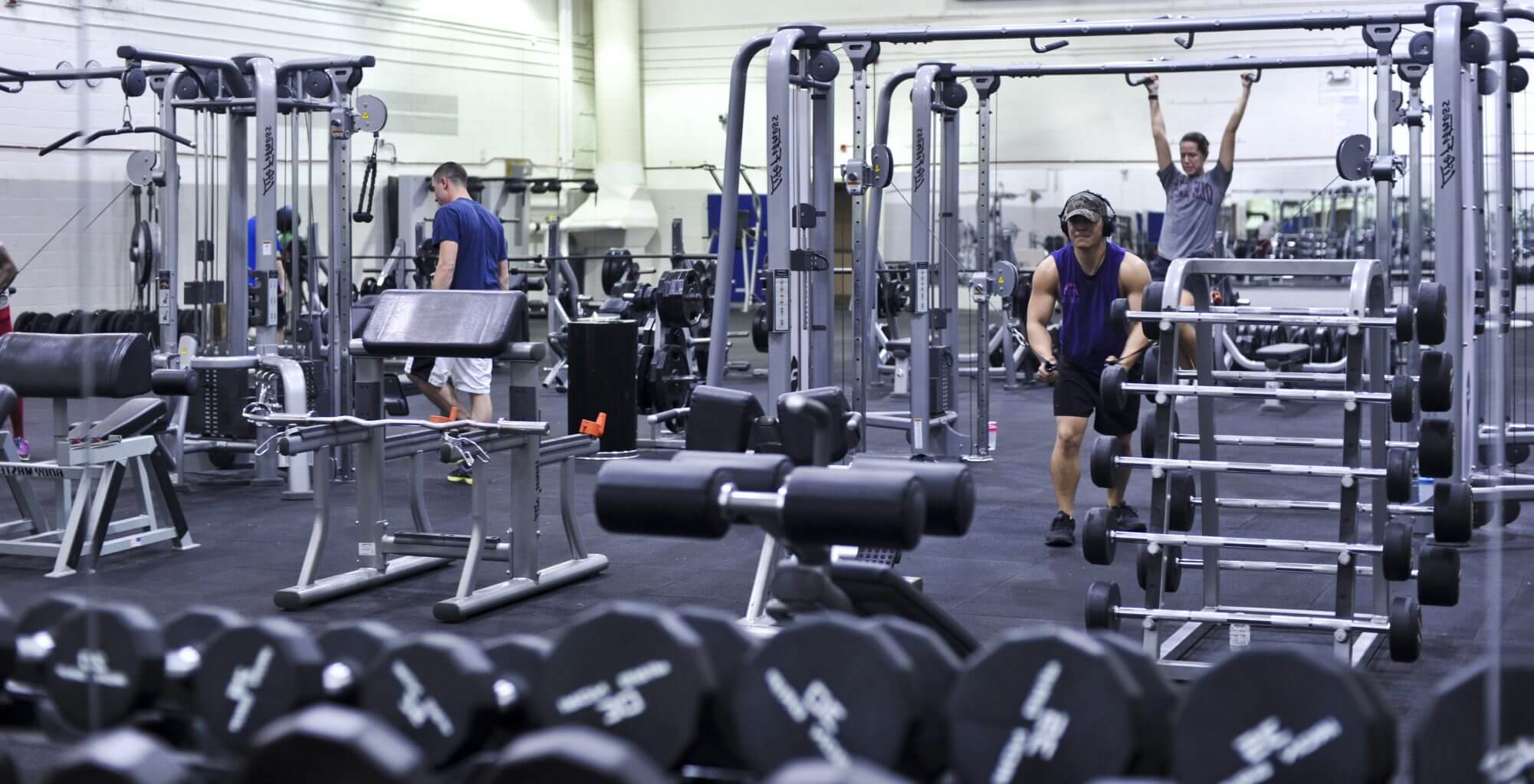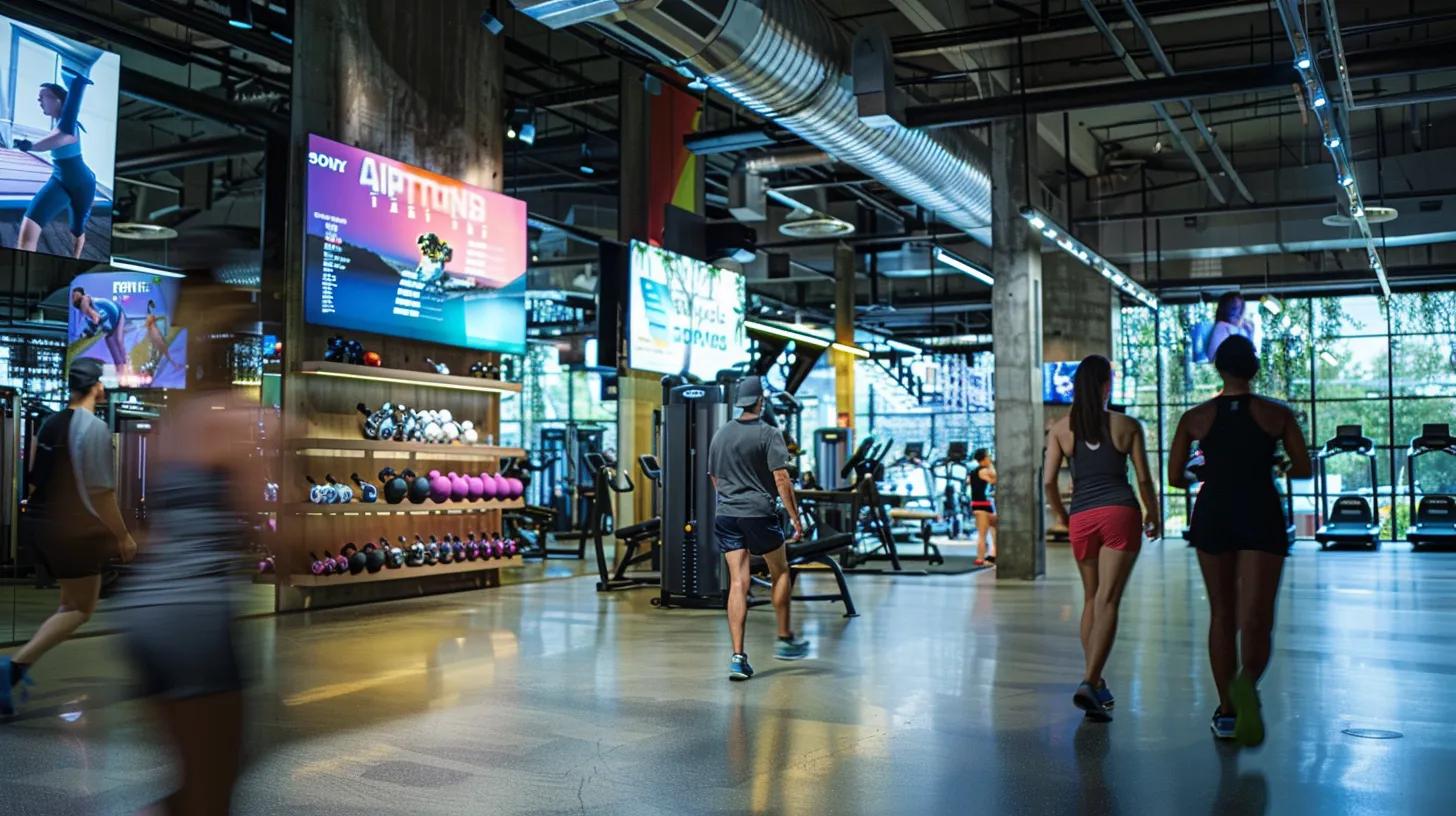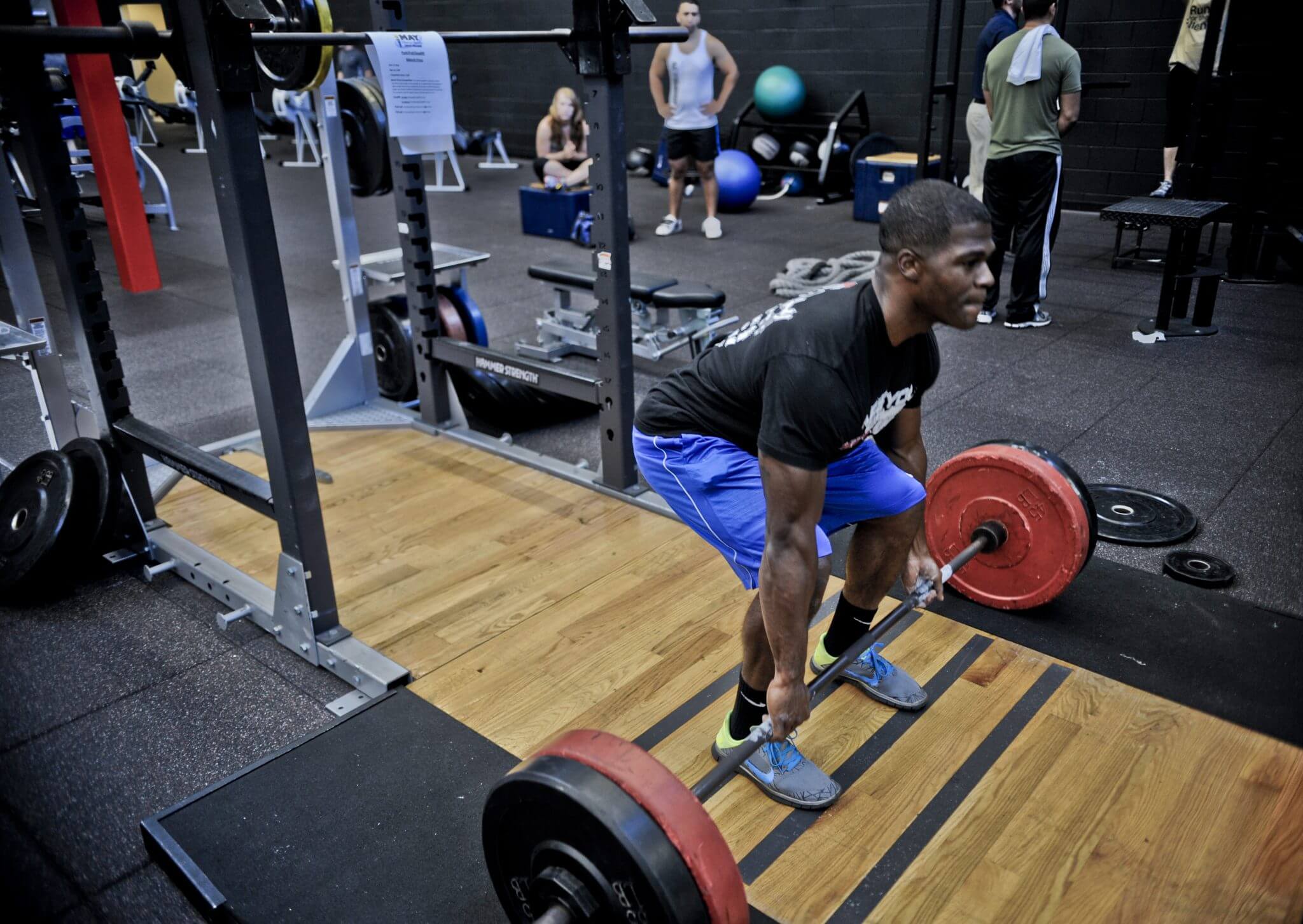If you’re a fitness professional you will have realised by now that your online presence is super important for attracting and keeping your customers. We’ve bundled in both gym and personal trainers in this case because there is much overlap between what both websites have to achieve. Read on to get some inspiration for your new website.
We can’t tell you exactly what you should do on your website to make it one of the best fitness industry sites going. But we can tell you what you will need to get there. There’s no point talking about fancy fonts or what copywriting to use until you have the foundations in place. Here are those foundations. No it’s time to get them in place and get head of the competition!
Using photos in your website design
The current trend in websites, across all sectors, is to go big or go home when it comes to photos. With images spanning the full width of the screen, you can make an instant impact on visitors by displaying what you do in all its glory. For some, getting photos sorted for a site is a bit of an afterthought. But these days resorting to stock images of someone doing bicep curls, or the saccharine smile of a model on a spin bike isn’t going to cut it.
You need to have a serious think about photos before you actually put them in your site. This doesn’t just mean hiring a pro to get loads of photos, it means making sure that the photos you take, will give the right message online.
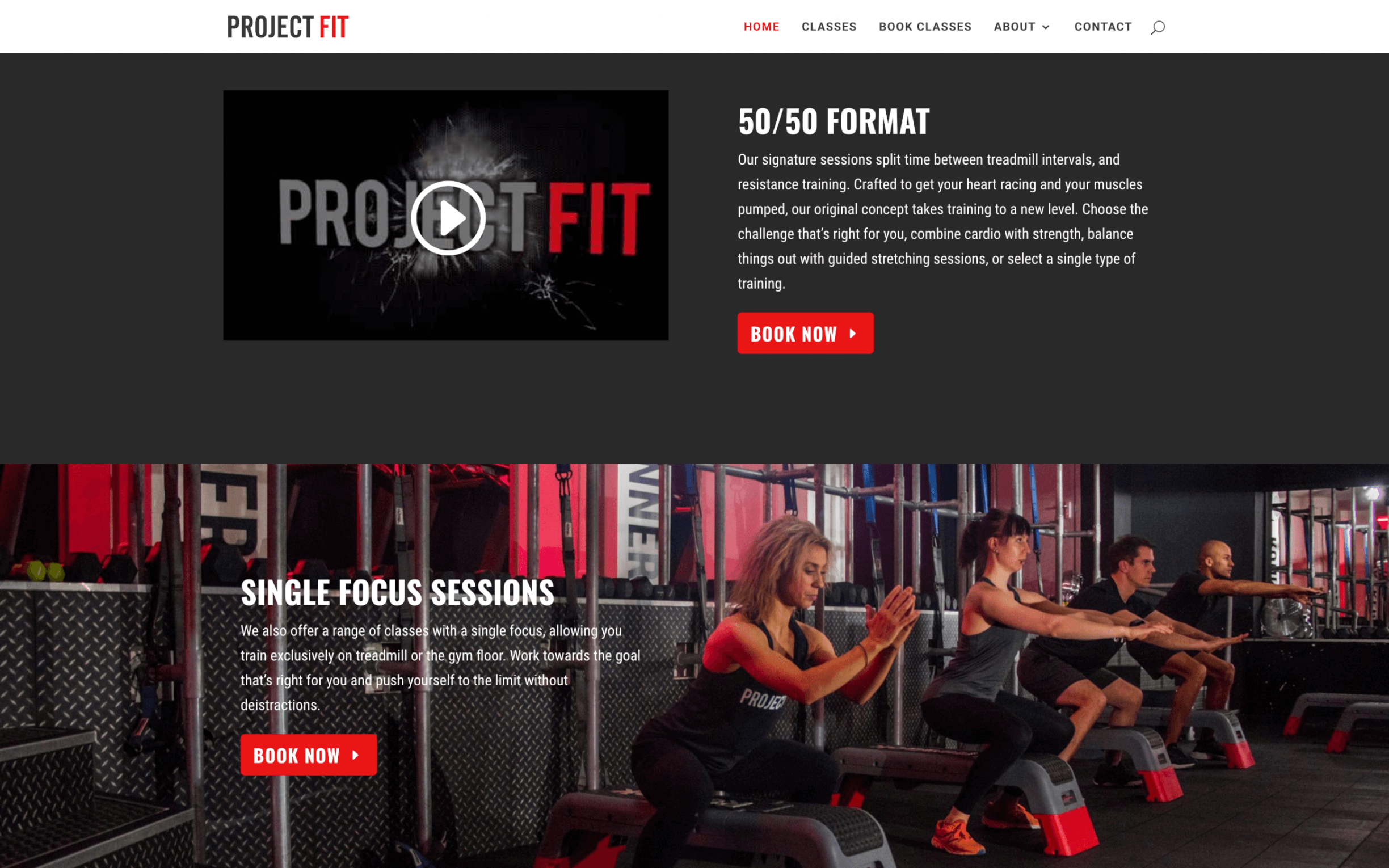
Great photographs can really show off your business – Notice how the framing leaves room for the text and the subject of the image
Fitness photos featured for function
What do you want the first picture people see to say about your business? Do you want to show off facilities, your customers, or your own inspirational athleticism? Depending on who you’re trying to target and what your USPs are, this could really vary. Make sure you’ve got an image that focusses on the right subjects to use front and centre on your website, otherwise you may end up with the photo that works best with the design and layout of the page but doesn’t say the most important things about your business.
It can take a little planning to make sure you get a compatible photo that really ticks all the boxes. For example, it’s probably going to have to be landscape (in a letterbox shape rather than a portrait aspect photo) to fit well at the top of your website pages. This means not using pictures of people in portrait – you’ll have the head and feet cut off completely. You also need to think about the colour palette and lighting, a homepage image is probably going to have text over it and that text needs to stand out from the background. On top of this, the image will need to fit with your brand’s colour scheme and also look good when your website adapts to mobile devices – which will have very different screen sizes and ratios.
As well as your facilities, do make sure you get some great pics of your team. Nothing is less personal than a website that doesn’t have a single picture of a person. It’ll make your business look empty and unloved.
Using relevant content to target the right customer demographics
The fitness industry is changing fast. Strong is the new skinny and men do yoga. So forget all those muscle bound body builder cliches and make sure your website isn’t at risk of turning off large numbers of potential clients from the very beginning. It is important to make your website as broadly appealing as possible but at the same time you need to make sure it can meet the specific needs of your target market. Sometimes it can be tricky to find this delicate balance.
Mainstream fitness is evolving fast, women are more likely to take up strength training than ever before and HIIT is now widely accepted as being more effective than “going for a jog” but do your specific audience know or care about these things?
We realise that many types of training and fitness businesses do offer services that would benefit a huge proportion of the population but you still need to make it clear what that proportion is. The images you use, the language you use and the services that you offer all have to make it clear to the customer that you are right for them.
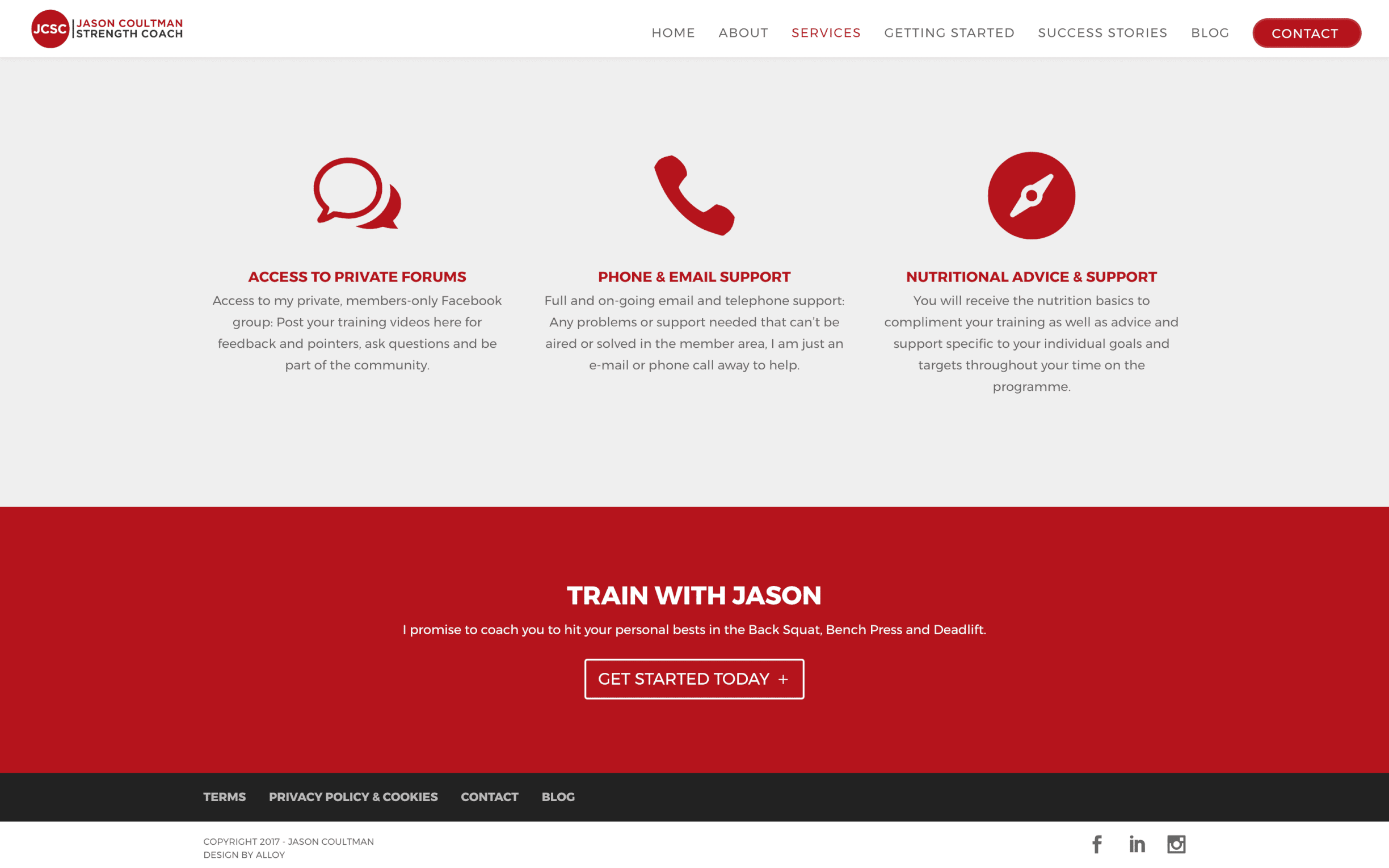
Jason Coultman’s website is catered to those looking specifically for strength training, but avoids an overly ‘masculine’ approach. After all, strength training is a fantastic way to keep fit for almost anyone. So, this site has a visual style that appeals to novices, but if you look closely, you’ll see that he competes in and coaches powerlifting at an international level – up against the very best in the sport.
If you have a pink and fluffy yoga site, your chances of attracting male customers will probably be diminished. If your website only has pictures of men admiring their biceps in the mirror while snarling, it could have an impact on attracting new female clients. This is of course the most obvious and cliched example but it’s not to be taken for granted.
In addition to falling into hideously cliched gender stereotypes, you need to consider the ability and goals of your target market. Are you a specialist powerlifting gym? If so, do you offer entry level training for people who don’t know their RDL’s from their front squats? Or do you only cater to national level athletes? Doing both is fine, but you need to make this clear. You can’t expect a lifting novice to think a service is for them, if you never mention that you teach the basics. Likewise, a serious strength athlete isn’t going to sign up unless they can see that you have a proper squat rack.
Integrate timetables and booking platforms
Technology should make life easier. That’s kind of the point, right? It’s now commonly expected that customers can book sessions and see live timetables online, it makes life easier for them and it should make life easier for you to. There are a ton of platforms out there which cater to this, MindBody being one of the most widely used. There are many alternatives ranging from free to monthly subscriptions, in some cases cheaper or better suited to different types of business. Regardless of which one you go for, make sure it’s properly hooked up to your website, easy to find and matches your branding. There’s nothing more confusing when trying to book a class than being redirected to a completely different website and colour scheme, asking for your credit card details.
If you already have a booking platform, are you really getting the most of it?
In many cases, more can be done to display the up-to-date info that’s already in your booking platform directly on your website. From making sure timetable display up-to-date class info to being able to buy a membership package with a single click of a button some packages offer great levels of integration. And these platforms change all the time. There may now be new features that weren’t around when you started. Or are now more affordable as the cost has come down or your business has scaled.
This helps with streamlining the customer experience between people exploring your website and signing up. In other cases, apps can be setup or integrated to make life even easier for you and your busy customers. Even if you just need to help people manage a recurring gym membership an online account can be a great way to interact with your customers, helping them to make more progress, get more from their membership and keeping them as customers for longer.
Educate and inform your potential clients with content
A website by itself is never enough to get you very far. To generate traffic you need to be found by people who are searching for what you do. If someone sticks “gym near me” into Google where do you turn up? Disclaimer: search on someone else’s computer when you do this. Cos Google knows who you are…
To get found you need to be at the top of the list that comes up on Google. You also need to convince people you know what you’re talking about once they hit your site – wherever they come from. One of the best ways to do this is to provide useful, relevant original content to your customers. We call this content marketing
Instead of shoving “advertising” down people’s throats like “buy my stuff” tell them something useful like “how to get stronger”. Which would you be more likely to read?
Creating content has the compound benefit of boosting SEO (where you rank in Google) and helping with conversion (turning visitors to customers). If you already have a gym or PT website but are looking for ways to get more traffic you should check out our fitness specific SEO services.
So by now you should understand why all those fitness experts out there are blogging like there’s no tomorrow. It isn’t just because they love sharing their knowledge and expertise for free. It’s good business sense too. So how can you do the same? Well just churning out blogs, left, right and centre isn’t going to work any more than the amateur who just walks up to the rack and starts doing biceps curls in the hope of looking like Arnie. You’re going to need a plan.
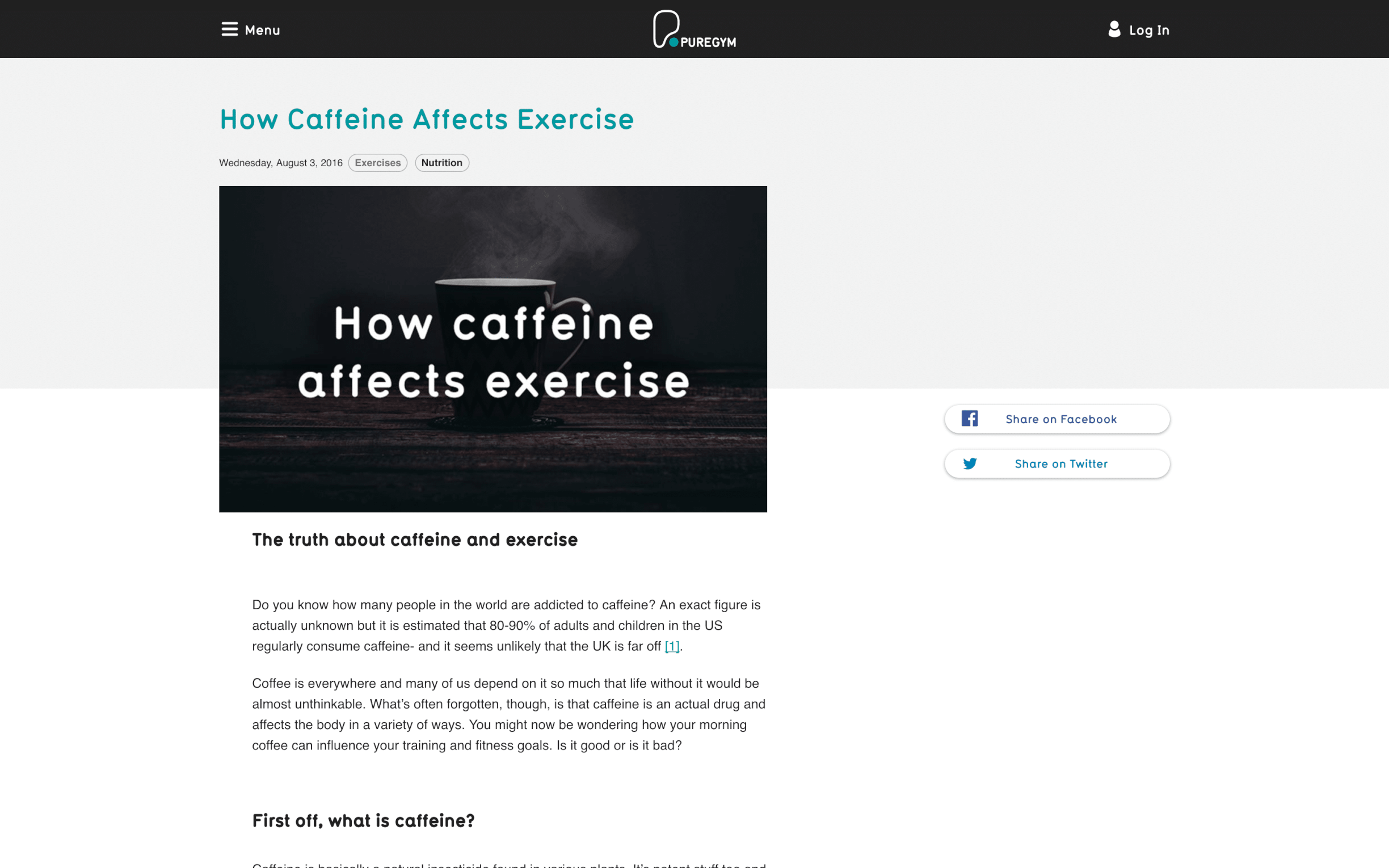
Engaging content needs to answer questions helpful to your customers.
Creating a content strategy for a fitness website
Your website is a key part of this from day one. If you’ve already got a good idea of how you are going to communicate with your target audience then you need to put together a plan of what information they will need. What will they be searching for and what type of content will be best for them? Your website should certainly accommodate a blog but there are many types of content and ways of structuring it to build a brilliant fitness resource. We’re not suggesting you have to rewrite the entire fitness bible. The level and detail of information you offer has to be relevant to your clients.
Think about setting goals such as one blog post per week, then building up towards assembling multiple posts into an ebook that potential clients can download by entering their email to subscribe. We could go on about content marketing for days. It’s what we do. And we love creating content for fitness people – because we are fitness people (have you seen Graeme’s biceps?!), so if you need a hand with this part of the process let us know.
Using testimonials to boost website conversion rates
OK, let’s go back to something a bit more practical and straightforward. Testimonials matter. How is someone who’s found you on the internet supposed to believe a word you say about the great results you get for your clients without testimonials? We certainly aren’t going to recommend that people believe everything they read on the internet. Testimonials make a lot of sense for any kind of business marketing online, but they work especially well when it comes to fitness.
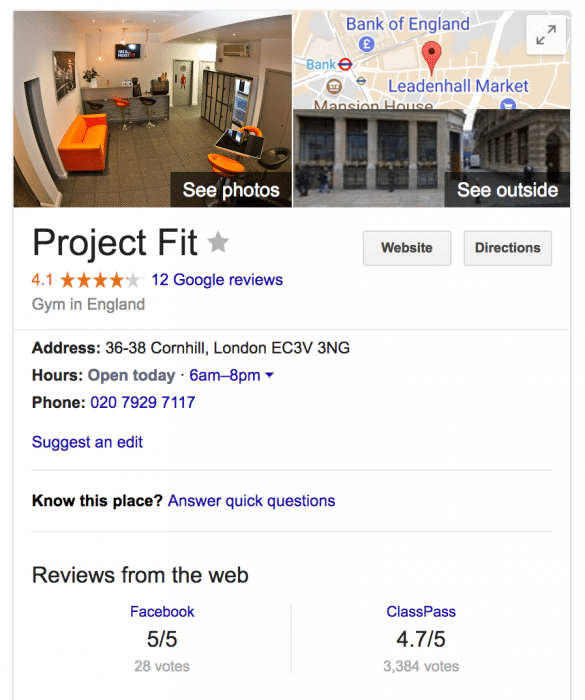
Why not add some your reviews from Google or social media to your website as testimonials?
There are loads of options too. Depending on what kind of info you can get your hands on, from short quote to a full on case study, with before/after pics, graphs and videos, get this evidence ready for your website.
As with photos, this is something to start thinking about in the early stages of your website project. Your marketing or web design company can do loads for you; taking and using photos, creating a super stylish website, putting your ideas and messages into creative copy, but they simply can’t make up testimonials for you. It’s up to you to track down your customers and pester them (at least a little) until you can get some serious evidence that what you do works.
Creating a fitness website strategy
As with your training, you need a proper plan in place for your website. If this list has started giving you ideas, go out and start getting things done. Here’s a quick checklist for your future reference as you start getting things sorted.
Website design homework checklist:
Who is your perfect target market? Think of age, gender, type of training, fitness goals and level of experience.
Get good photos: Whether you use your iPhone or a pro, get high res landscape action shots.
Think about content: You don’t need to write it all yet, just start jotting down ideas. From free fitness programmes, to tips on form and nutrition.
Pick a booking platform:
Take no mercy getting testimonials: Film your clients giving a short speech if you have to, or get it in writing. Just get something.
Find a web design team that understands your training: Hey, that could be us?
If you’ve put together all these pieces for your next webdesign project you’re all set to move on to marketing the new website and your upgraded brand. If you’d like to find out more about our fitness marketing services head over here for more information or read our latest articles on marketing tips for fitness brands in our blog. If you’re looking for help putting all of the above (and more) into place for your new website, we can help you truly hit the ground running, read more about our website design services for gyms and personal trainers to get a more detailed idea of how we can help.

